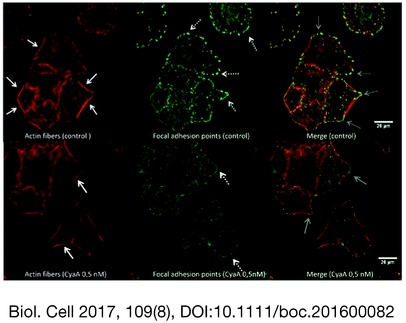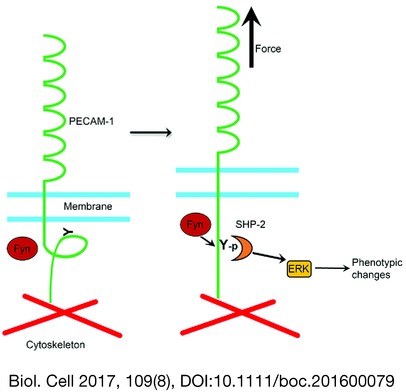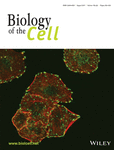Journal list menu
Export Citations
Download PDFs
Cover Picture
Issue Information
Research articles
Exposure to Bordetella pertussis adenylate cyclase toxin affects integrin-mediated adhesion and mechanics in alveolar epithelial cells
- Pages: 293-311
- First Published: 09 June 2017

Research article: We characterize cell structure and mechanics at the early stage of alveolar epithelial cell invasion by adelynate cyclase, a major virulent factor of Bordetella pertussis, which produces high levels of cyclic adenosine monophosphate. The cellular consequences are: a loss in cell viability, cytoskeleton and focal adhesion remodelling, and weakening in adhesion evidenced by a decrease in integrin-mediated bond number, demonstrated by the recently proposed multiple bond force spectroscopy method.
Mechanotransduction properties of the cytoplasmic tail of PECAM-1
- Pages: 312-321
- First Published: 23 June 2017

Research article: We proposed earlier that PECAM-1 is an endothelial cell mechanotransducer and that externally applied forces stretch the PECAM-1 cytoplasmic tail (PECAM-1cyt), exposing a hidden tyrosine which allows it to be phosphorylated by Fyn. If so, PECAM-1cyt could have some folded structure that can be mechanically unravelled. In this study, we show force spectroscopic data on PECAM-1cyt supporting our idea. The figure shows mechanoactivation of PECAM-1, which induces mechanosignalling through proteins such as ERK1/2, a known shear stress-activated MAP kinase.






